 Built-in Google Docs restrictions
Built-in Google Docs restrictionsWhy Google Docs’ in-built security cannot prevent editing, copying, and sharing & what you can use to protect documents instead.
Google Docs is undoubtedly a great collaboration platform, but many businesses are left wondering what they should do once the collaboration process is over. Ideally, you do not want everybody you share the document with to be able to make changes to it. In fact, if it contains confidential or sensitive information, you probably don’t want them doing anything with it other than reading it. In other words, you need a way to lock a Google Doc from editing, copying & pasting, printing, and other common word processing features.
There are several options for this, but the most convenient is naturally Google Docs’ built-in functionality. We’ll be analyzing the security it provides, as well as assessing whether there are any more suitable solutions for Google Docs protection.
 Built-in Google Docs restrictions
Built-in Google Docs restrictions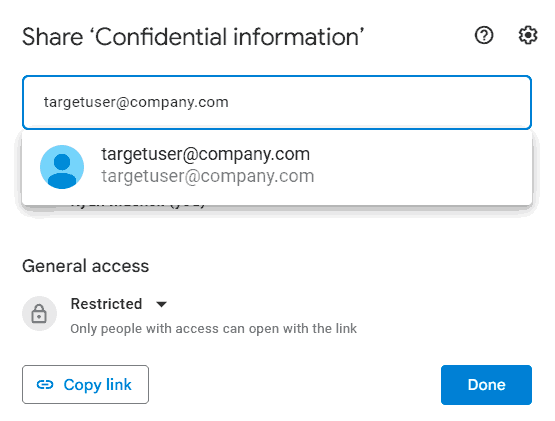
The standard way to lock a Google Doc is by sharing Google Docs and then granting a user permission to access them with the “Viewer” or “Commenter” role. This will grey out options such as printing and downloading and present an error message when a user tries to copy text to the clipboard.
Unfortunately, while it all looks above board, these Google restrictions are easy to bypass. This is because while Google Docs’ browser-based nature is convenient for the end user, it also makes its security easy to circumvent.
Google Docs enforces its anti-copying controls using JavaScript, which executes partially on the user’s PC. This means that all they need to do is go to the basic mobile version of the website (docs.google.com/mobilebasic) and disable JavaScript. They can then copy and paste the content into a new document or print it to a PDF file to save it for offline use.
In other words, the built-in restrictions only offer the appearance of protection. A simple Google search will reveal to anyone how to bypass them in seconds. This leaves you only with one choice if you want to lock a Google Doc effectively: Protecting it with another solution and then uploading it.
 Can you lock a Google Doc securely?
Can you lock a Google Doc securely?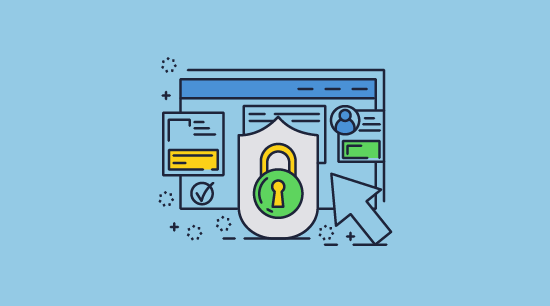
The first-choice people turn to lock a document in Google docs is password protection. However, as we have covered in our blog ‘How to password protect a Google Doc’ it is far from secure.
To lock a Google Doc from editing and copying, a DRM solution is required. Locklizard Safeguard DRM enables you to protect documents in PDF format before you distribute them via Google Docs or Google Drive. Using a combination of encryption, transparent licensing, and a secure viewer application, Safeguard DRM ensures that only authorized users can view and print a document and that nobody can copy, edit, or screenshot it.
To apply Locklizard Safeguard DRM, you need to save the document from your Google Drive folder as a PDF file and then follow the instructions below.
 How to prevent editing and copying in Google Docs
How to prevent editing and copying in Google DocsThough it is not as convenient as doing everything in the browser, it is still quite quick to prevent copy and paste and restrict editing with the Safeguard Writer application:
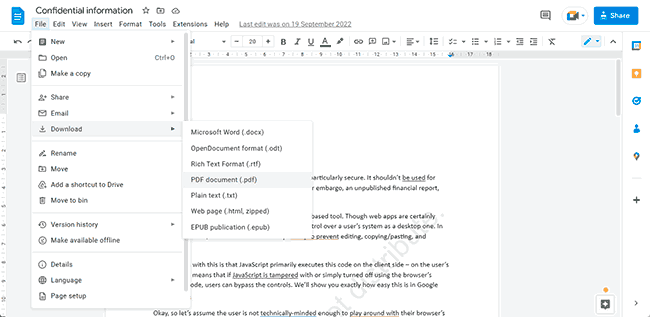
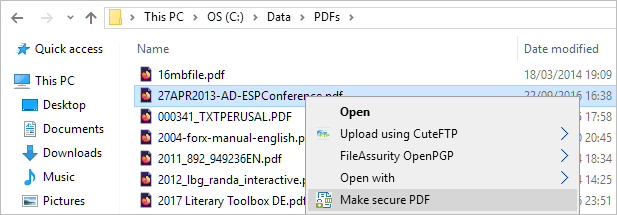

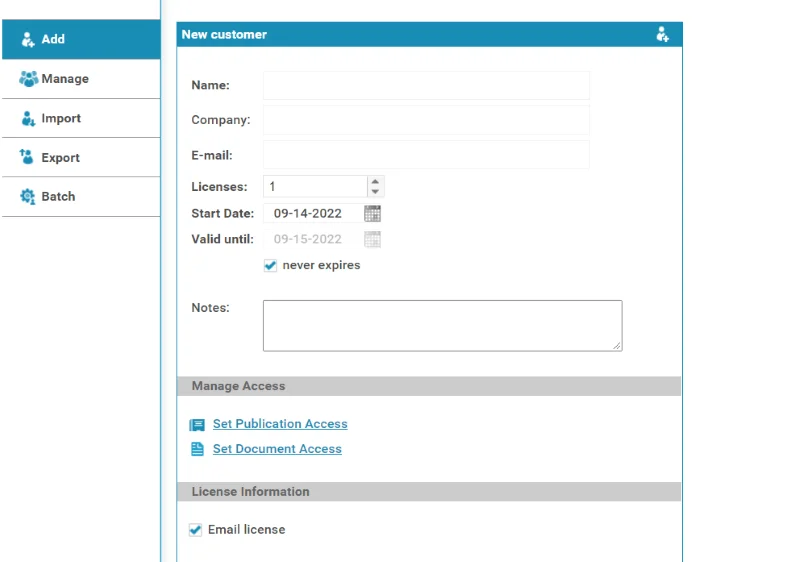
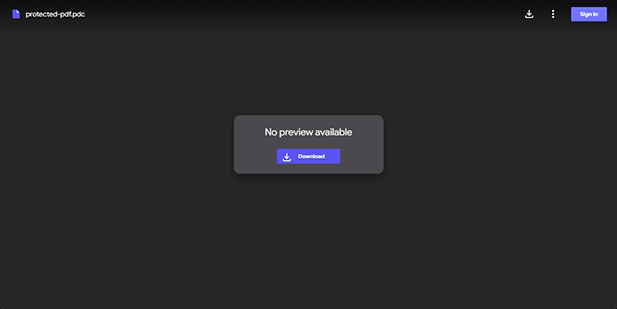
 How to track Google Doc views
How to track Google Doc views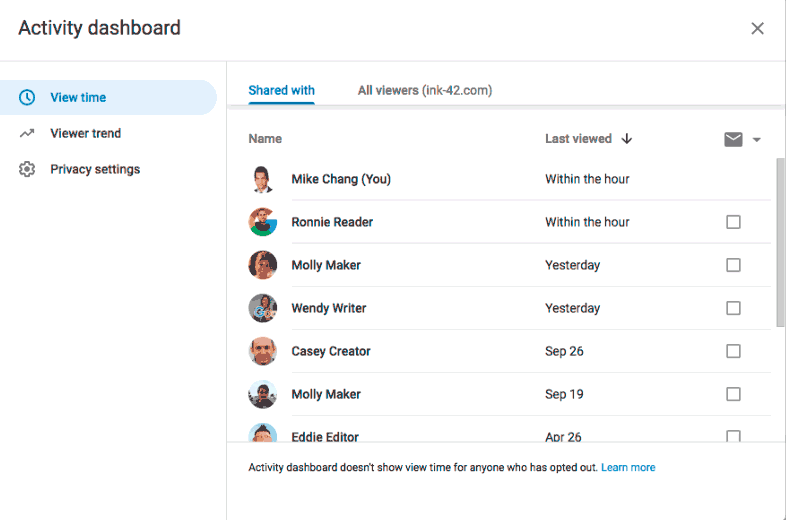
Google Docs has built-in view tracking for Google Workplace subscribers. This is accessible through the “Tools > Activity Dashboard” interface and does provide useful information on who has viewed the document, when, and trends in viewership. It also shows who they have shared the document with.
However, while this system might be helpful for collaboration, it is not suitable for serious security or compliance use cases. This is because users can opt out of tracking via Activity Dashboard in their account settings. Anybody with malicious intentions can therefore simply turn the feature off before viewing the document.
Additionally, as we covered above, users can easily make a copy of the document via copy-paste or printing. They can view it once, copy it to a new file, and leave you none the wiser. Google does not seem particularly motivated to fix these problems, and the “opt-out” option is an intentional privacy feature. This leaves businesses looking to track Google Doc views again with only one option: downloading the document and protecting it with an external tool.
 How to track Google Doc views and prints with Locklizard
How to track Google Doc views and prints with LocklizardSafeguard Enterprise allows you to log every time a document is viewed or printed, who it is viewed or printed by, and when. Once enabled, users cannot opt out of this tracking or copy document contents to another file to bypass it.

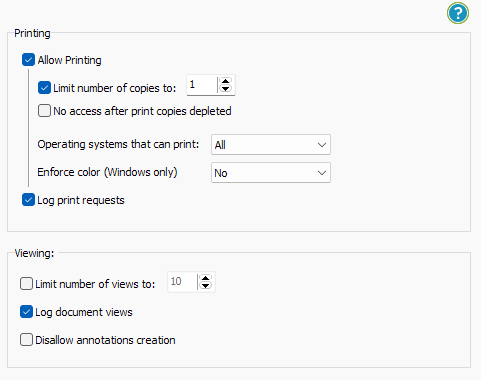
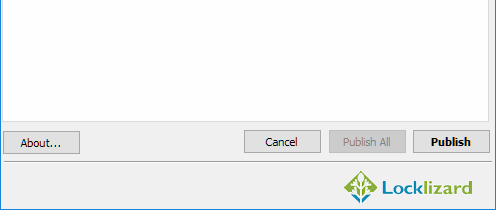
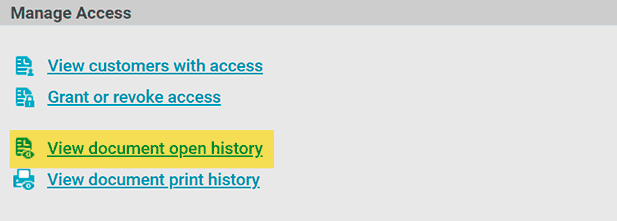
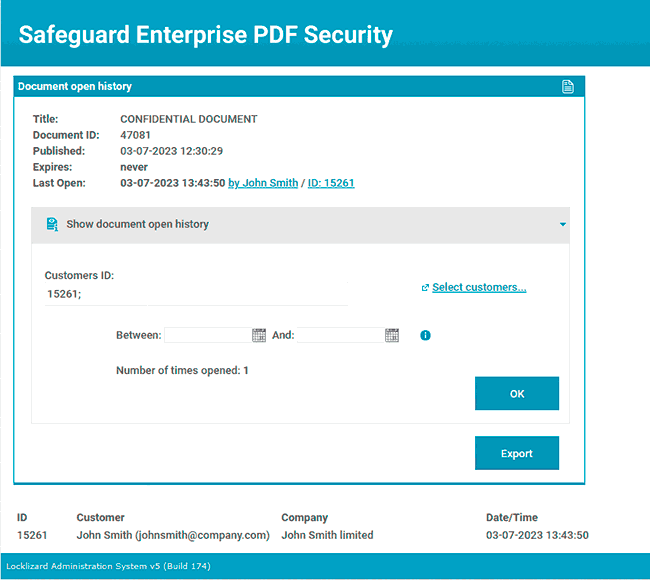
 How to stop sharing of a Google Doc
How to stop sharing of a Google Doc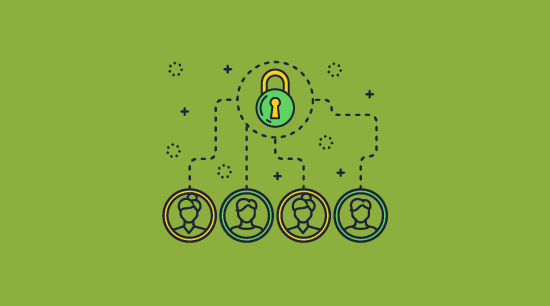
Google Docs has two options for sharing: sharing with specific accounts or sharing via a link. To be clear: sharing an important document via a link is a terrible idea. Any user you send the link to can share it with somebody else, who can then view and screenshot your document at will.
As an alternative, Google offers the ability to share with other Google account holders. The owner can restrict sharing so that others cannot share it via link or with another account. This is still not secure because:
Everything considered, it’s impossible to stop sharing of Google Docs using Google’s in-built tools. This isn’t particularly surprising, considering that the software was built to make sharing and collaboration as simple as possible.
 Stop people from sharing Google Docs with Locklizard
Stop people from sharing Google Docs with Locklizard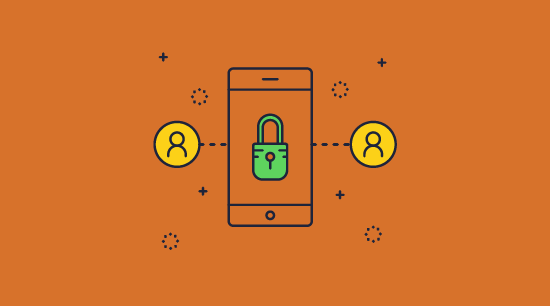
Preventing unauthorized sharing is a core functionality of any DRM solution. However, Locklizard does not try to prevent the transfer of files themselves. It is our philosophy that the only way to stop sharing is to instead make documents indecipherable to those who aren’t viewing them on an authorized device.
In that vein, Locklizard documents are encrypted with AES 256-bit encryption. This renders them nothing but a jumble of numbers and letters to those without the encryption key. The encryption key in question is transparently and securely transmitted from a licensing server only to users with a matching license file installed on their device. The key is stored in an encrypted key store that cannot be moved to another device and the license file can only be installed on one device (unless you specify otherwise).
When a file is opened using the Locklizard Viewer application, it is only ever decrypted in the device’s memory. The viewer also has the ability to prevent copy and paste, block screenshots, and only allow printing if the admin decides to.
To prevent sharing of a doc, follow these steps:
 Create a protected PDF
Create a protected PDF Prevent printing of a PDF
Prevent printing of a PDF Stop screenshots of PDF content
Stop screenshots of PDF content Add expiry to a PDF
Add expiry to a PDF
 Granting document access in Safeguard Admin
Granting document access in Safeguard Admin Inserting your secure PDF into Google Docs
Inserting your secure PDF into Google Docs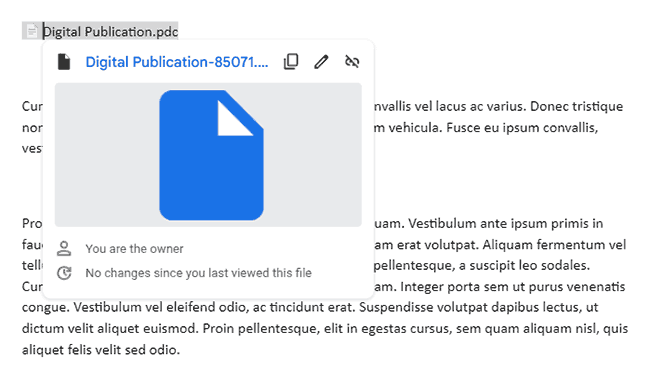
It can be useful to embed a PDF into a Google Doc when another document contains relevant information. This can be achieved securely with information that is sensitive or confidential using Locklizard Safeguard. Uploading your protected .pdc file to Google Drive and adding that link to your Google Doc allows you to provide a convenient way for users to download related sensitive documents without allowing unauthorized users to view them.
For a step-by-step explanation of this, see how to insert PDF into Google Doc.
 Using the Locklizard Web Viewer
Using the Locklizard Web ViewerOne of the major selling points of Google Docs is its ability to work on any device that supports a web browser. This can be an important feature for users who work primarily with ChromeOS or other devices that do not support traditional applications.
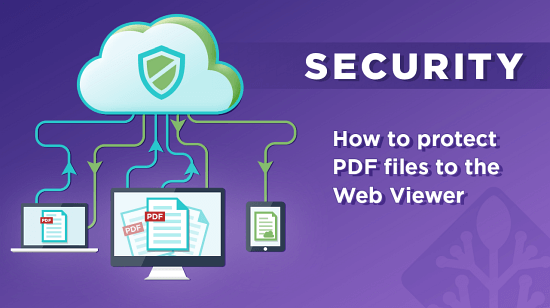
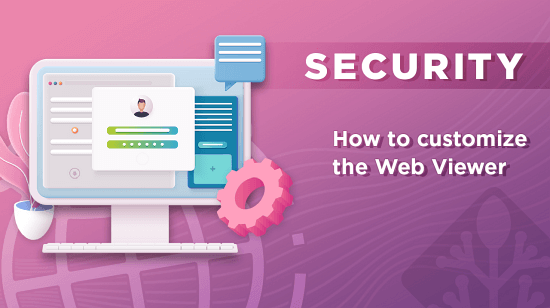
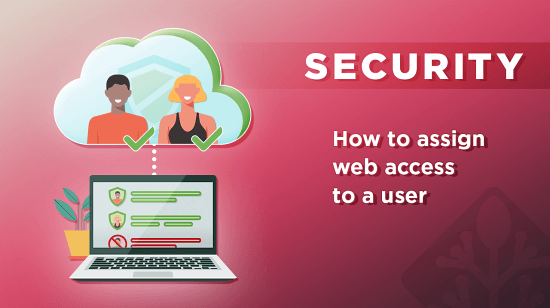
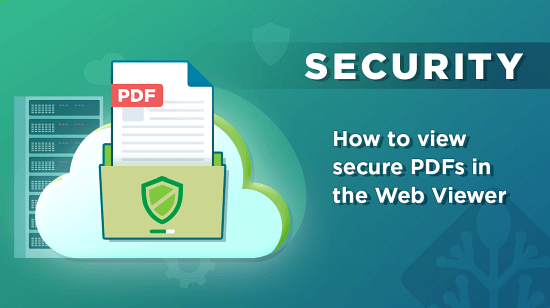
For these cases, Locklizard provides a web viewer. This is less secure than our desktop viewer, but more secure than Google Docs while offering features such as:

Publishing to the web viewer is simple, and once complete, users can view all of the documents they have access to in a dedicated portal.
 A secure alternative to Google Docs
A secure alternative to Google Docs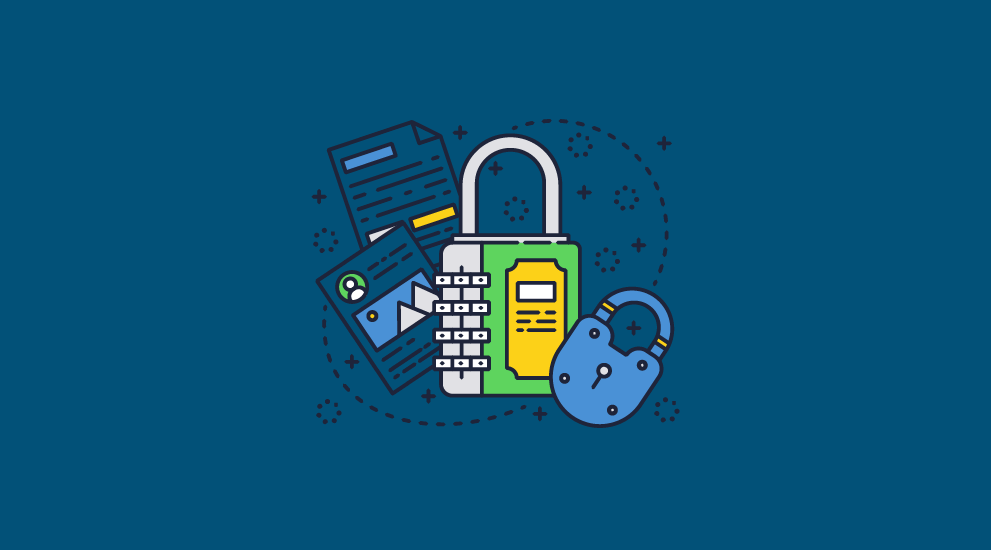
The unfortunate reality is that you cannot stop sharing, editing, downloading or printing of a Google Docs document without taking it outside of the platform. Google Docs’ in-built tools simply aren’t suitable if you’re going to be working with and sharing sensitive or confidential information.
Locklizard is not designed as a complete replacement for Google Docs. Rather, it enables businesses to add additional security to their documents after the collaboration process is complete. This provides you the flexibility to perform text-editing tasks in a familiar application without compromising the security of sensitive documents when they are shared with others.
To lock your Google Docs from editing, sharing, and copying, take a 15-day free trial of our DRM software.
 FAQs
FAQs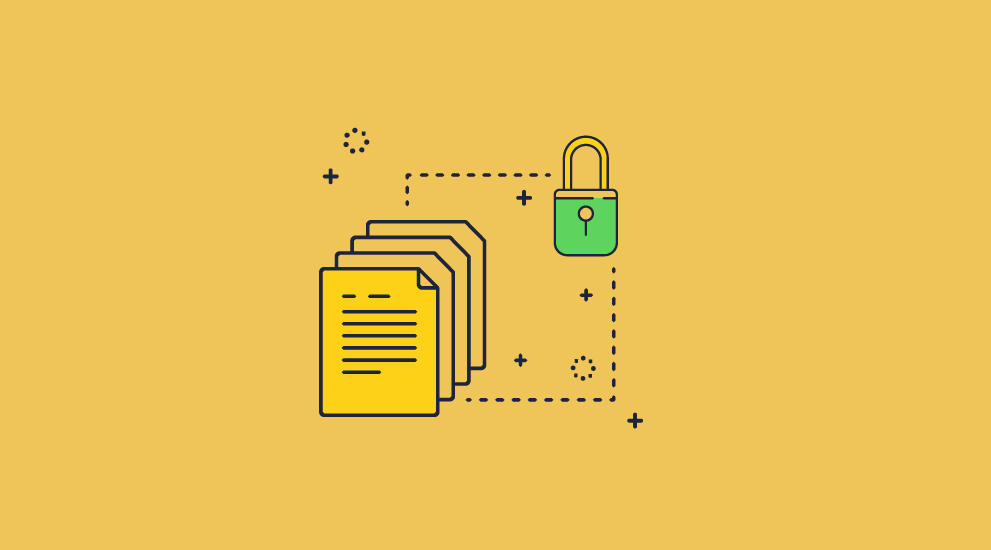
Yes, to restrict access to locked content (encrypted and DRM controls added), users and their devices are authorized via a secure licensing system. Only those authorized can access locked documents.
No, there is no need to. Users can download a locked doc since it is encrypted and the DRM controls are locked to the document. Unauthorized people cannot view it.
DRM controls prevent users from copying text and images, and screenshot protection blocks screen grabbing apps from copying content as an image. You can also disable printing to prevent copies from being made of printed docs.
The most secure way is to have users install Locklizard’s Viewer on to a device. Protected documents are locked to the device so they cannot be shared.
No, if you password-protect a document in Google, users can still bypass the security. See How to password protect a Google doc and How to copy a google doc that is protected.
Yes, all pages in a Locklizard protected document and their content (images and text) are locked from being edited, copied, pasted, printed and screenshots.
No, the whole document is locked and encrypted. Encryption and DRM controls are applied to the complete document (all pages) and not just sections or parts of it.
Yes, but it is not very secure. See How to password protect a Google doc.
Yes, users can save a Google doc even if it locked by going to the basic mobile version of the website (docs.google.com/mobilebasic) and disabling JavaScript. They can then save it as an unprotected PDF file by printing to PDF.
Users however cannot save Locklizard protected docs into unprotected formats.
Yes, while document content cannot be edited, users can still add markups and notes within the secure Viewer.
You cannot lock a Google sheet in its native format. You have to convert the spreadsheet to PDF format to protect it with Locklizard.
Yes, you can email locked PDF files as attachments to email messages just like any other file. This is much more secure than Gmail confidential mode where users can easily remove security.
“Fantastic product… outstanding support.”
“We would recommend Locklizard to others”
“The clear leader for PDF DRM protection”
“Our ebook sales have gone through the roof”
“Simple & secure – protects IPR from theft”
 Protect IPR
Protect IPRSee why thousands of companies use Locklizard to safeguard their documents and increase revenue streams.
How to expire Excel files
How to watermark in Excel
How to protect Excel files
Save a Google Doc as PDF
How to share a PDF online
How to insert PDF into Word
How to edit a protected PDF
How to convert ePub to PDF
How to prevent PDF download
How to share Google Docs
How to prevent PDF download
Enforce do not copy distribute
Share sell PDF in WordPress
How to remove a watermark
How to add security to PDF
Publish digital publications
How to share a PDF as a link
How to timestamp a PDF
Insert PDF into Google Doc
How to convert Word to PDF
How to convert PDF to Word
Share securely in SharePoint
How to encrypt email in Gmail
How to encrypt PDF files
How to recall unsend an email
How to watermark PowerPoint
How to lock a Word document
How to santize PDF files
How to lock a Google doc
Prevent PDF security removal
Protect Word without password
Add a dynamic watermark
Password protect Google Doc
Add a watermark in Word
Make a PDF non editable
How to create a stamped PDF
How to prevent ebook piracy
Password protect a Word doc
How to protect a PDF securely
How to revoke document access
Change PDF security settings
How to disable printing of PDFs
Sell online courses securely
How to add security to a PDF
Encrypt a PDF without Acrobat
Share documents securely
How to prevent PDF sharing
Protect confidential documents
How to publish ebooks securely
How to restrict PDF editing
How to password protect a PDF
How to protect ebooks
How to sell Reports securely
How to make a PDF read only
How to send a PDF securely
How to watermark a PDF
How to lock a PDF from editing
How to encrypt a PDF
How to make a PDF expire
How to password protect a PDF
How to protect online courses
How to email a PDF securely